



If you’ve been watching any professional cycling this year, you’ve no doubt seen a Scott bike leading the race or at least making the podium. Scott’s athletes have had a monumental year across all disciplines, including an almost unimaginable “Double Double” – gold in Men’s and Women’s Olympics and World Championships. So Active Junky had to see what Scott’s been doing so right with its 2017 models.
The 2017 Spark series, responsible for the four golds mentioned above, is a perfect example of two of the signatures of the brand: innovation and choice. Already highly successful and popular, the 2017 mountain bike models have been completely redesigned, and are available with either 27.5” or 29” wheels, 100mm or 120/130mm travel, and 1x11 or 2x11 drivetrains. All also feature the following updates: slacker geometries; steeper seat angles to place the rider more over the BB for better pedaling efficiency; longer reach (and shorter stems); and a totally new rear suspension design, using an inverted Truunion mount is the new Metric standard (shorter overall length of shock yields same travel), which they say adds stiffness while saving weight.
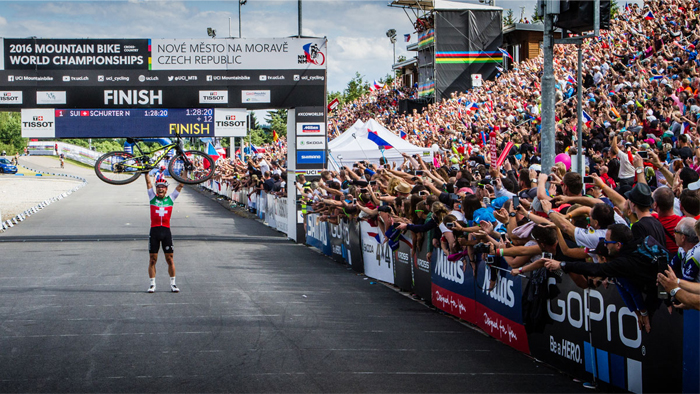
Scott Boulbol
Another trend Scott has wholeheartedly embraced in recent years is the wider-tire story. First there were Fat bikes, with 4” tires (give or take) and now Plus-sized wheels that fall in between standard width and Fatties: Both allow for added traction, lower tire pressures for a smoother ride, and better performance in wet, muddy or snowy conditions. Some Plus mountain bikes can also fit standard racing wheels so the bike can be dialed for that too when needed.
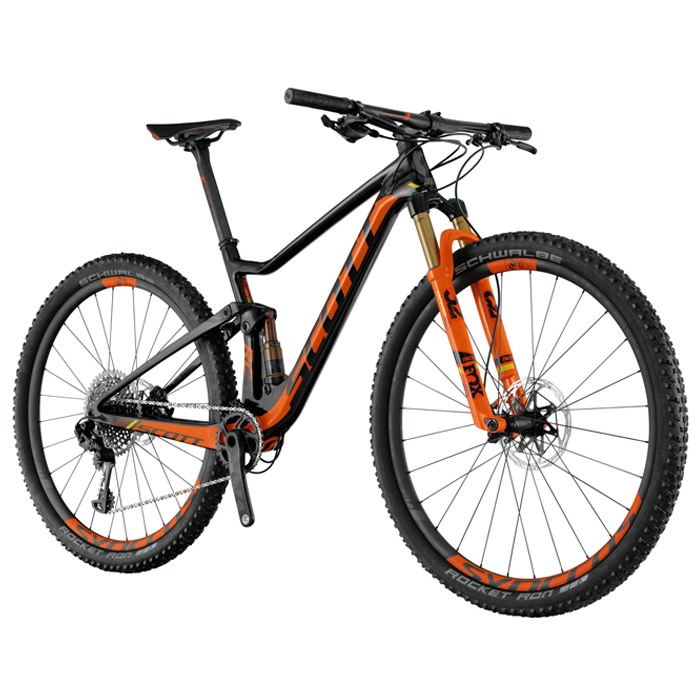
This is the mountain bike that shook the XC racing world in 2016 with the “Double Double” mentioned above. A ridiculously light frame and tons of options helps make the Scott Sparks mainstays on pro XC podiums and a super popular bike with marathoners as well – most of these happen on the Spark RC 900 SL. The frame (with shock) is a scant 1800g, making this year’s model the lightest Spark ever made. The 100mm-travel Spark RC 900 SL is spec’d for racing, with a FOX 32 SC Factory Air fork, SRAM XX1 Eagle 12-speed drivetrain, and SRAM Level Ultimate brakes.
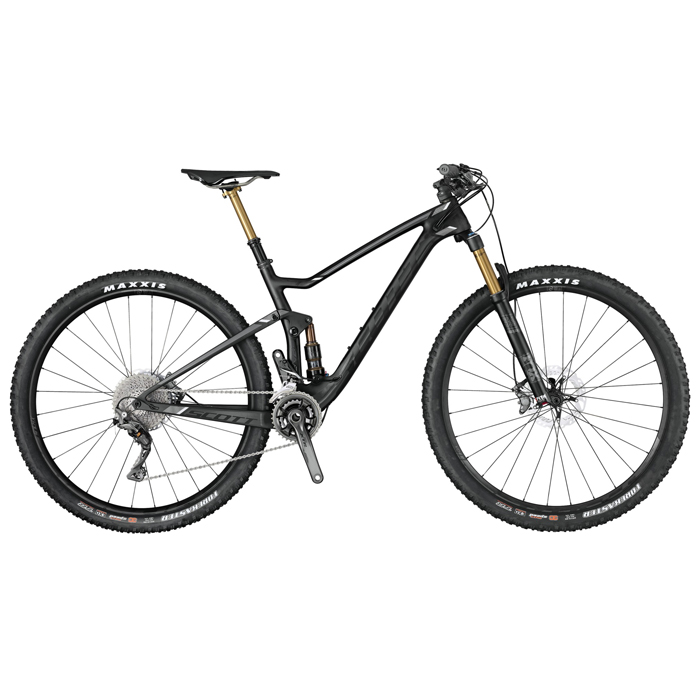
This is the 27.5” version of the Spark, with similar updates from the RC 900 SL above, including an HMX carbon frame and Truunion reverse mount shock. However, with the smaller wheels, and 120mm of suspension travel, the 25-pound Spark 700 Premium handles the descent as well as it climbs. Many mountain bikers prefer the lower center of gravity of 27.5” wheels – especially shorter riders – for descending and/or especially bumpy terrain, but the XC-inspired frame keeps it quick and nimble. Specs include: FOX 34 fork and NUDE EVOL rear shock with Scott’s proprietary TwinLoc remote lockout; Reverb dropper seatpost; and Shimano XTR drivetrain.
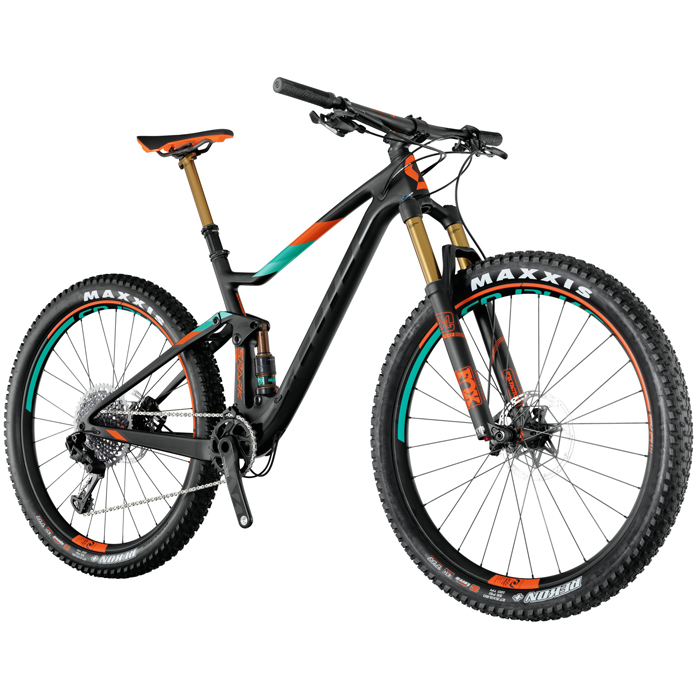
Scott is going all-in on the Plus trend, even with their XC-focused Spark line, giving the line a more Trail-friendly model. The Tuned Plus MTB offers 130mm of front suspension on a FOX 34 Float Factory Air fork, along with 120mm in the rear (130mm front) on the FOX NUDE shock. Combined with the wider tires and a dropper post, this 25 pound Scott bike should be able to handle anything most riders are bold enough to dish out, from big hits to railed corners, even in nasty conditions. SRAM’s XX1 1x12 drivetrain, Level Ultimate brakes, and TwinLoc suspension remote complete the package.
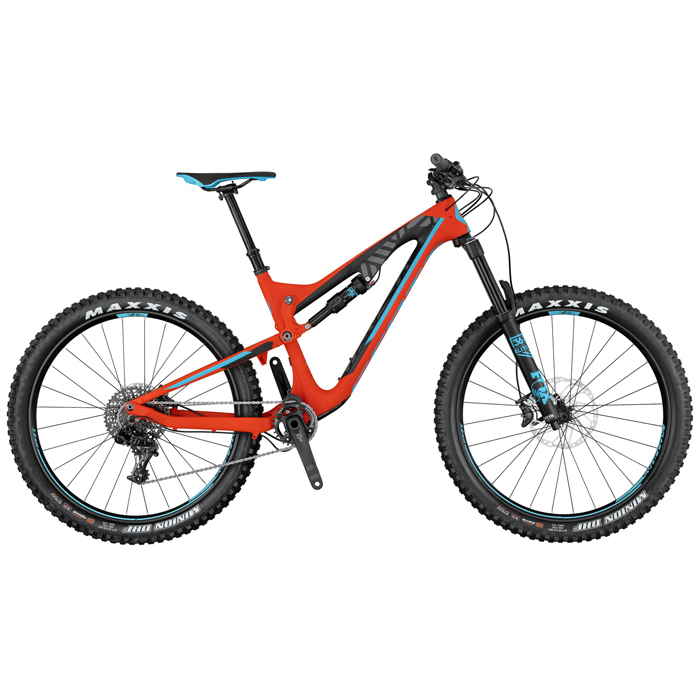
The Scott Genius line has a well-established reputation as one bike to own if you can only own one bike, while the LT version has also made a name for itself in the Enduro world, and is only offered in Plus. With a relatively svelt carbon frame, 160mm of travel front and rear, and the added cush and grip of plus tires, the Genius LT Plus is quite capable going up or down in seriously gnarly terrain, and in every season. Specs include the FOX 36 Float Performance Elite Air fork and FOX NUDE shock with TwinLoc, plus a SRAM GX1 drivetrain and Shimano SLX brakes. Bike weighs in at just over 30 pounds.
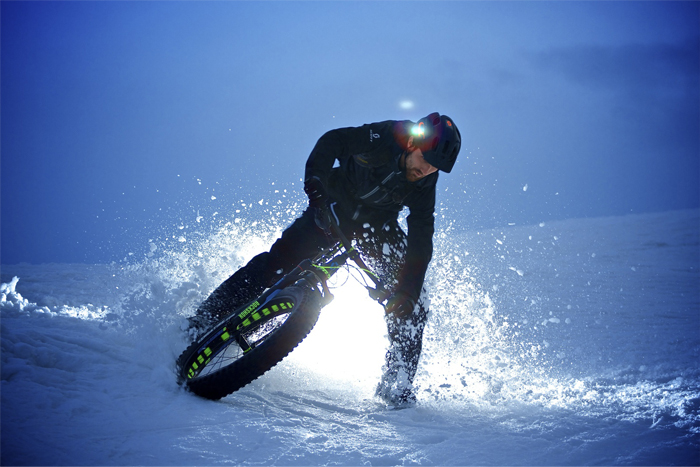
Scott Boulbol
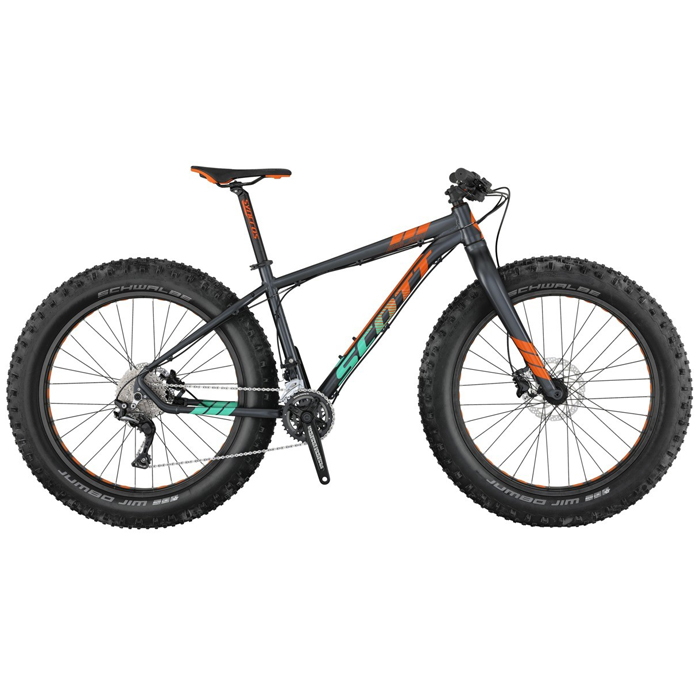
If Plus is not wide enough, Scott also puts out a Fat bike: the renowned Big Jon. This alloy-framed, full-rigid rig comes in at a respectable 32+ pounds, and is best in conditions standard or plus-width tires simply can’t hack: desert sands, mountain muck, snowy singletrack, etc. But fatties are not just for extremes; they devour roots and small rocks on “normal” trails, and can corner as fast as you’re brave enough to go. As Scott likes to say, “Didn’t think fat bikes were cool? You must have not met Big Jon yet!”